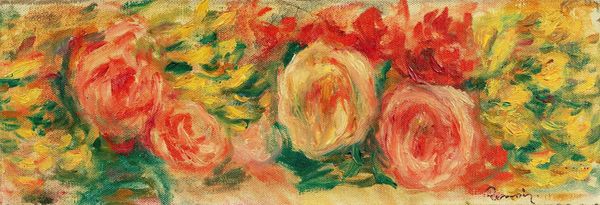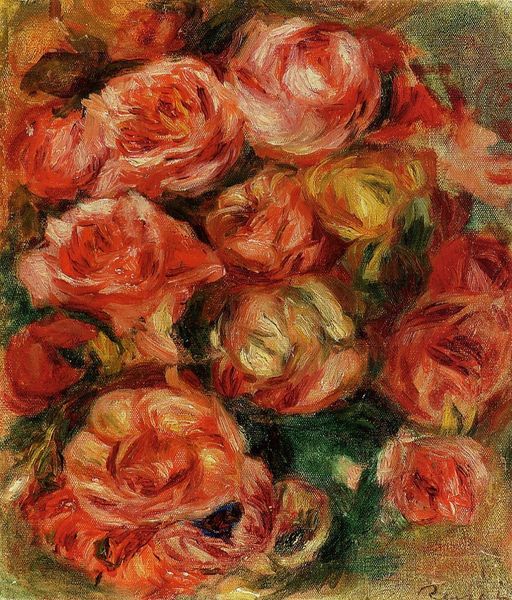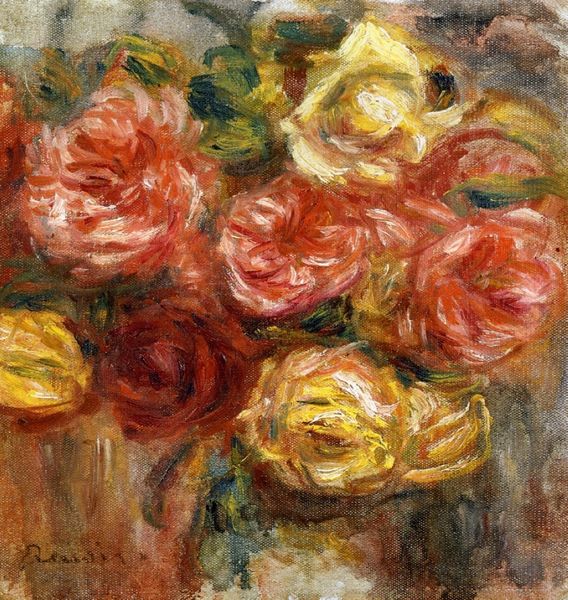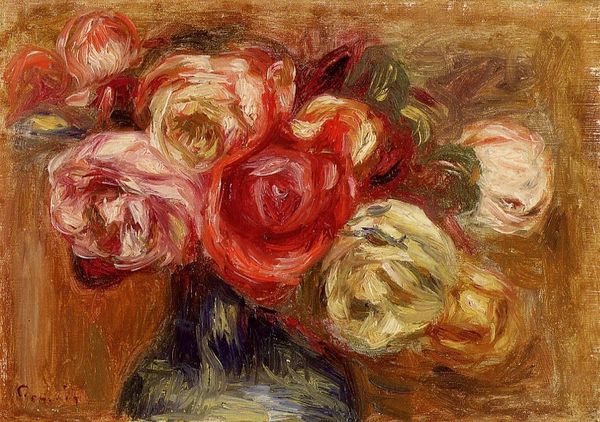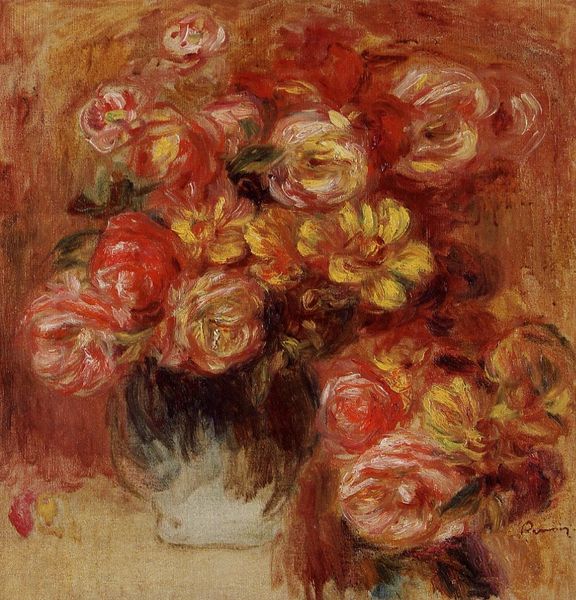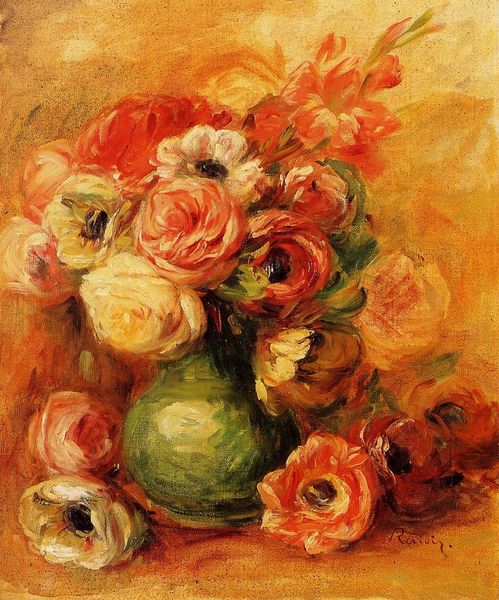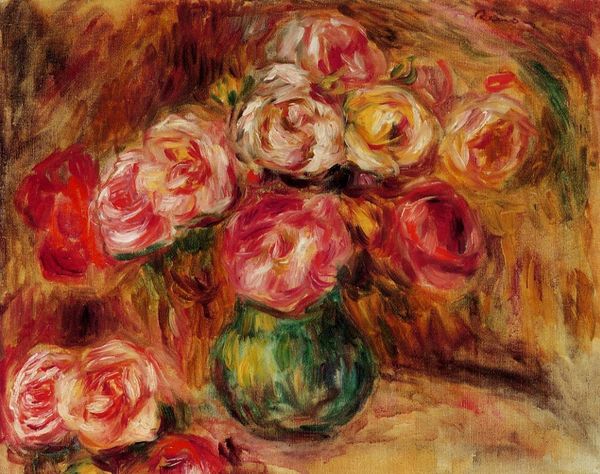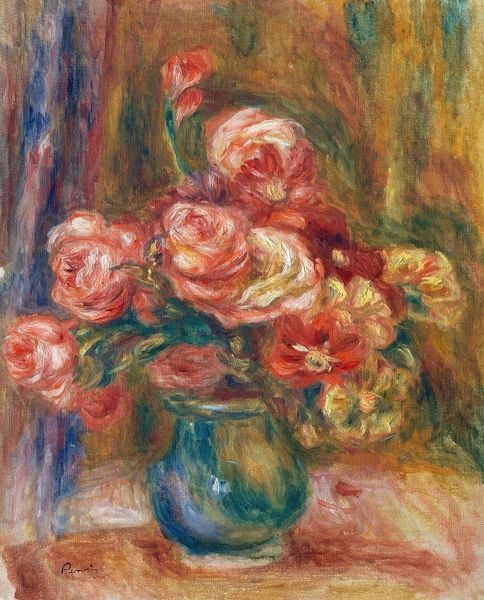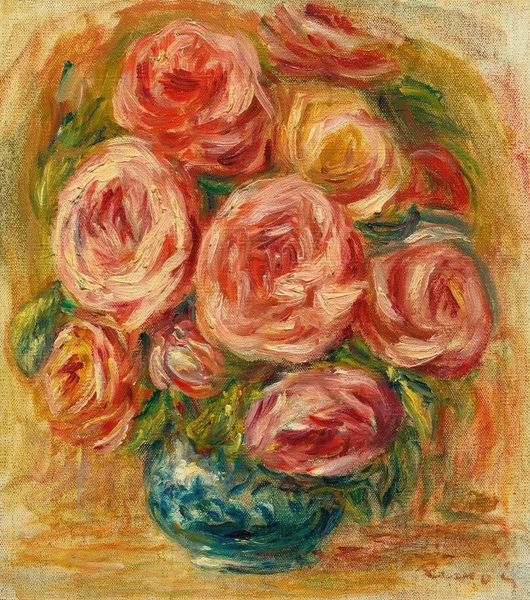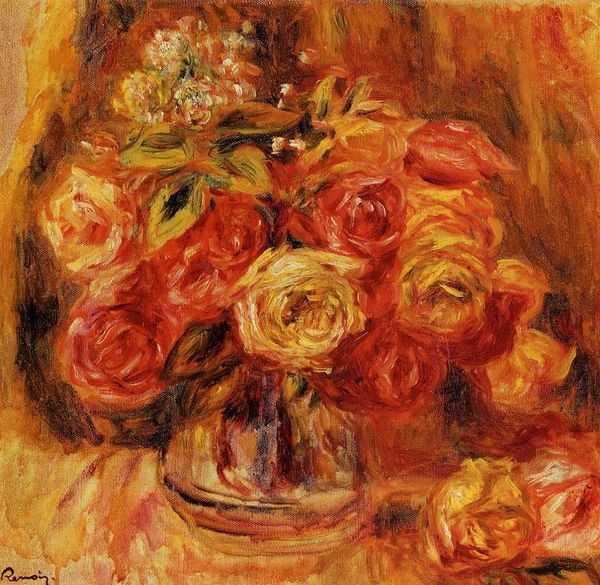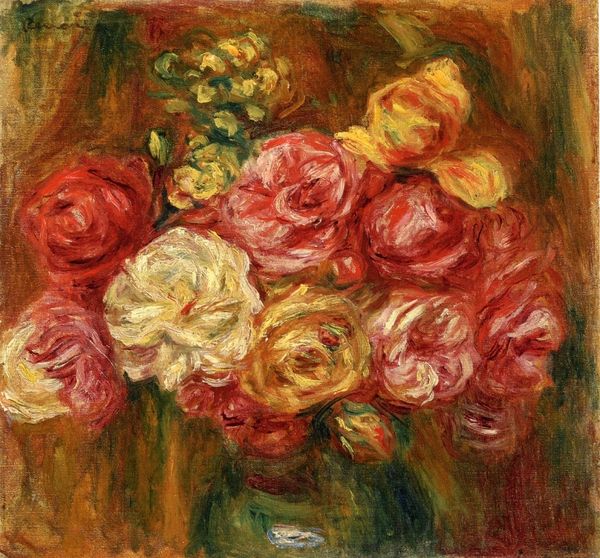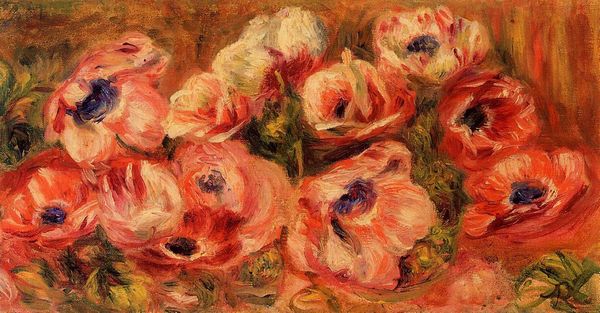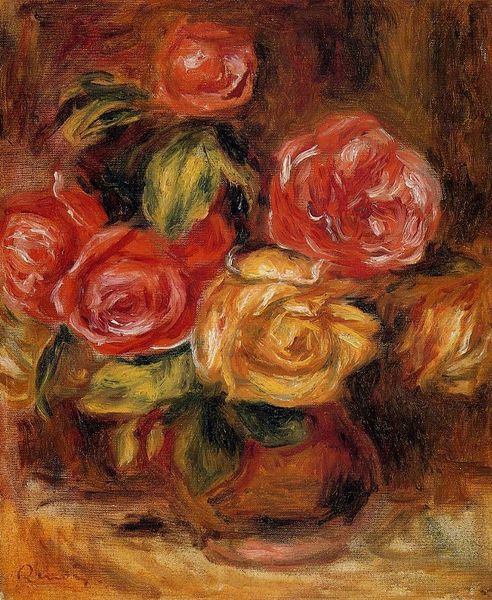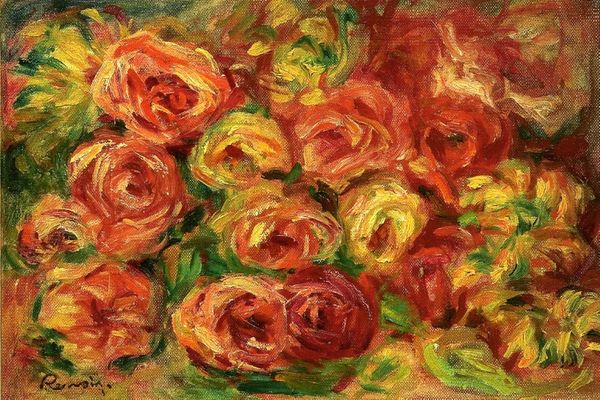
Copyright: Public domain
Editor: This is Pierre-Auguste Renoir's "Study of Flowers Anemones and Tulips," painted around 1910. It's an oil painting, full of these vibrant, almost feverish colours. There’s a certain restlessness to it that’s different from some of his earlier work. What do you see in this piece that helps place it within the context of his later career, and maybe the broader art world at the time? Curator: It’s tempting to see these late floral paintings simply as decorative or pretty. But context is key. Renoir, in his later years, was working within a rapidly changing art world. Impressionism was receding, and movements like Fauvism were challenging established artistic norms. He was also experiencing significant physical pain from rheumatoid arthritis. Editor: So the shift to brighter colours and looser brushwork isn't just a stylistic choice? Curator: Exactly. Think about the socio-political function of art and what was happening. There was growing social unrest and the looming shadow of World War I. These later floral paintings, including this one, perhaps offered an escape, a return to something beautiful and seemingly apolitical in a time of great uncertainty. They also maintained his visibility within a commercial art market eager for works by a master, even one grappling with health issues and the rise of new artistic styles. Editor: That’s fascinating! I had always considered these purely in terms of his personal style development. Curator: And don't underestimate the market! By focusing on subjects deemed universally pleasing, like flowers, Renoir could continue to sell his work. Editor: So much more to it than initially meets the eye! I'll never look at Renoir's late floral paintings the same way again. Curator: Precisely! Art is always a product of its time, reflecting the society and market in which it was created. It can give clues on cultural ideas when considering the time the work was created.
Comments
No comments
Be the first to comment and join the conversation on the ultimate creative platform.
